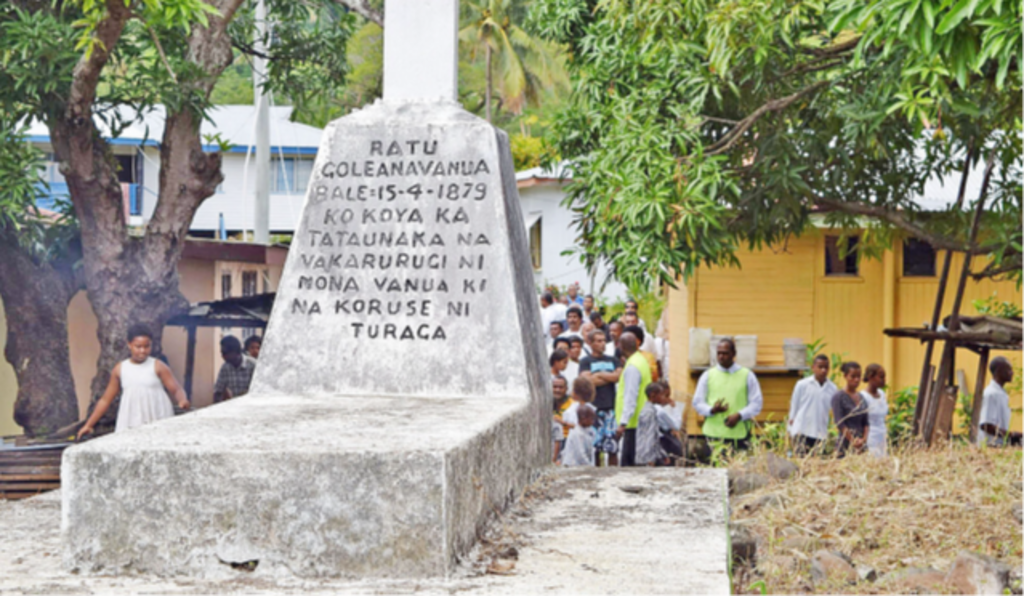RESOLVED in the heat of battle Ratu Daunivavana began a massacre oblivious whether he struck a friend or foe since it was the customary in Fijian wars that warriors covered their whole bodies in black.
To his dissatisfaction, when he approached the dead for a closer look, he saw they were all Fijians.
He then turned to his warriors crying out that they had been deceived adding that the dead were Fijians and not Tongans.
In their records, the early Catholic missionaries note Ratu Daunivavana as saying: “Let us run quickly to Wairiki and reach the shore: the Tongan army is following the shore.”
In his writings on the early church, Father John Crispin said Ratu Daunivavana and his men all went running to Wairiki and when they were no more than one hundred metres from the village, Ratu Daunivavana heard the first rifle shots.
“Here are the Tongans”, he cried, “Death to the Tongans.”
But then he was astonished to see four Fijian chiefs carrying Ratu Golea in their arms.
He recognised his brother, went up to him and asked whether he was fatally wounded to which
Ratu replied that he wasn’t but that perhaps he had broken his arm.
When asked who had wounded him, Ratu Golea said a man hidden in the bush adding that it was perhaps Wainiqolo.
In fact, they saw a man who rejoined the Tongan army at the distance of a rifle shot.
Being the brave warrior that he was Ratu Koila did not risk his life in combat but remained hidden in Somosomo.
Hearing of the pardon given to the survivors of the Tongan army, he sent word to ask pardon for himself.
Ratu Golea replied that the assassin must come himself, otherwise he would die.
Ratu Koila arrived like a crouching dog and placed his soro (presents of submission) at the feet of Ratu Golea and begged for pardon.
“Your pardon!” replied Ratu Golea, “You don’t deserve it. However, I give it. I despise myself for having been afraid of you.”
The war was finished, the army of Wainiqolo was annihilated and that of Ma’afu was extraordinarily weakened.
Tupou, king of Tonga, had, from then on, renounced all hope of ruling Fiji.
Two days later, Ratu Golea sent his 46 Tongan prisoners to return to Lau sending a message to the Tongans still in Lau: “Take back your Tongans and send me my brother Ratu Kalou. If in 15 days my brother is not here, I will go to Lau with all my warriors, and I will wipe you out to the last man.”
Six days later Ratu Kalou arrived, but, as Ratu Daunivavana had said, he was half dead.
He addressed all the assembled chiefs and said to them: “I don’t have much longer to live. Agree together and name Ratu Golea chief of Cakaudrove.”
All the chiefs then assembled. Ratu Golea was named Tui Cakau (chief of Cakaudrove). He was then asked to name Ratu Daunivavana as his second in command. “No, he said, “because Daunivavana and I are as one.
“Let Ratu Koila be my second in command, so that he will remember by that I have pardoned him, and above all that he will never forget that he is obliged to me for that.”
The church records state that Father Favre had not returned to Solevu; he had waited at Nawi for the outcome of the war at Wairiki, and the return of Ratu Kalou from Lau, of which he heard the story.
“Learning of the arrival of Ratu Kalou, he went to Wairiki to help care for him, and at the same time to congratulate Ratu Golea and Ratu Daunivavana on their victory,” notes Fr Crispin.
“Tui Cakau (this would in future be the name of Ratu Golea) received Father Favre very favourably.
He invited him to sleep in his house and told him that the next morning he would tell him what he wanted to say.
“That evening, Tui Cakau called all his chiefs, and the leaders of his three thousand warriors, and said to them: ‘At the request of Tupou I had already ordered you to be Wesleyans. But now the Methodist ministers have deceived us and have tried to have us wiped out by the Tongans.
I wish that you should all be Catholic. All those who wish to become Catholics attend tomorrow morning at the prayer and the instruction which the priest will give himself’.”
The next day Ratu Golea called Father Favre, and said to him: “Father, all Cakaudrove is Catholic. I beg you to receive us all today into the Catholic religion, and to reunite us all for prayer.” The lali was rung, and everyone came to the shore. It was now fully daylight. Everyone was seated there except for the famous Ratu Koila.
When the prayer and the instruction were finished, Tui Cakau made a sign with his hand to the three thousand warriors to remain in silence.
He then in a loud voice thanked Fr Favre and said to him: “Please go and say to Father Breheret that all Cakaudrove is Catholic, and ask him for a priest.
Tell him that we will all follow the word of the priest whom he will send; that I take on myself to take good care of him, as is my duty.”
Father Favre promised in an equally loud voice to carry out this commission. Everyone rose, and two hours later Father Favre left for Solevu, his heart full of joy.
At the moment he was about to leave the district, passing close to a warship, and he was approached by a small rowing boat. The officer commanding the rowing boat said to him: “The commander of the English warship asks you to please come on board.” Fr Favre went.
At first, he was not well received by the commander of the warship, who had been wickedly informed by the Wesleyan ministers.
But Father Favre explained everything to him, and the commander made him warmly welcome, and there was no consequence for anyone.
Ratu Golea greatly prized his cross of Victory and the devoted service and encouragement of Father Favre.
From that date the Father visited them more frequently. In November he baptised a number of adults.
Thereafter, he had a foothold whenever he found it possible to visit Wairiki.
Ratu Golea, now king, gave him a small section of land, which he called Betelema.
Church records reveal that on Betelema was built the first thatched church of this mission and it also became the site of the central station for Taveuni and the surrounding district.
• This is a re-run of The Sunday Times article published on March 11, 2018.
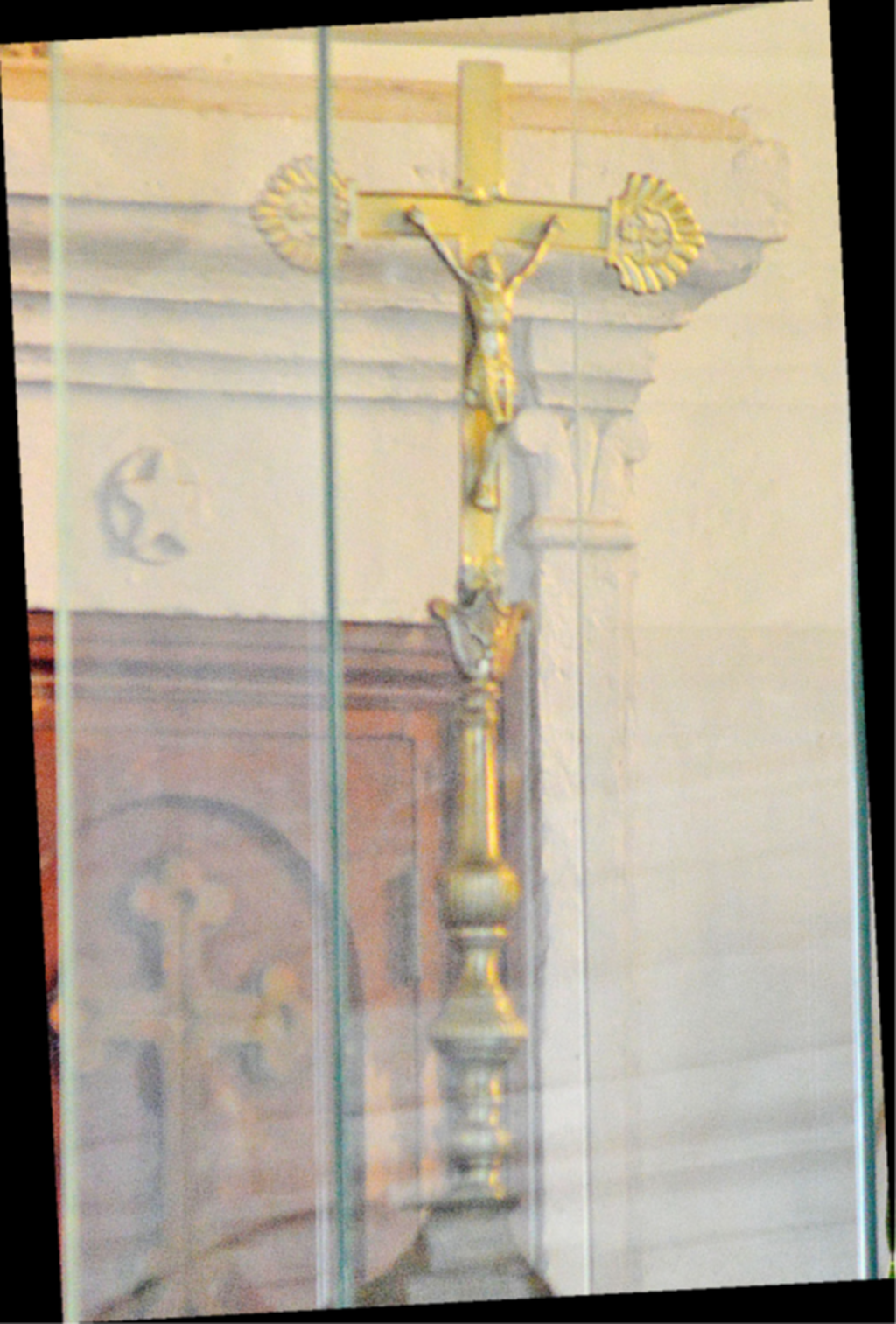
The cross that was handed to Ratu Golea still stands
encased in glass at the Wairiki Catholic Church. Picture: LUKE RAWALAI
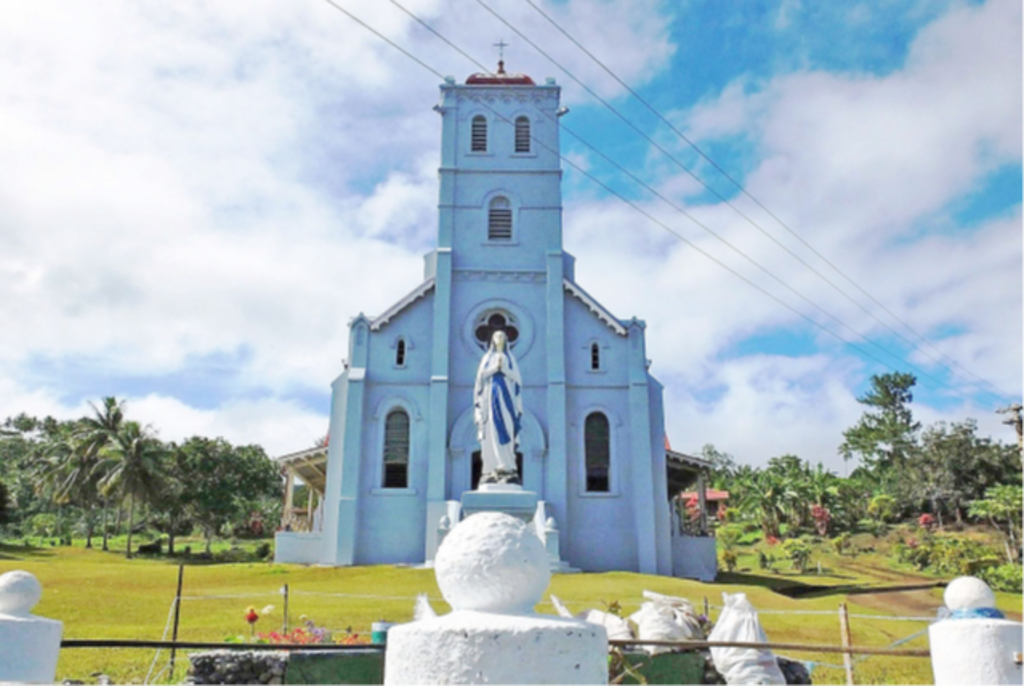
The Catholic Church at Wairiki.
Picture: LUKE RAWALAI
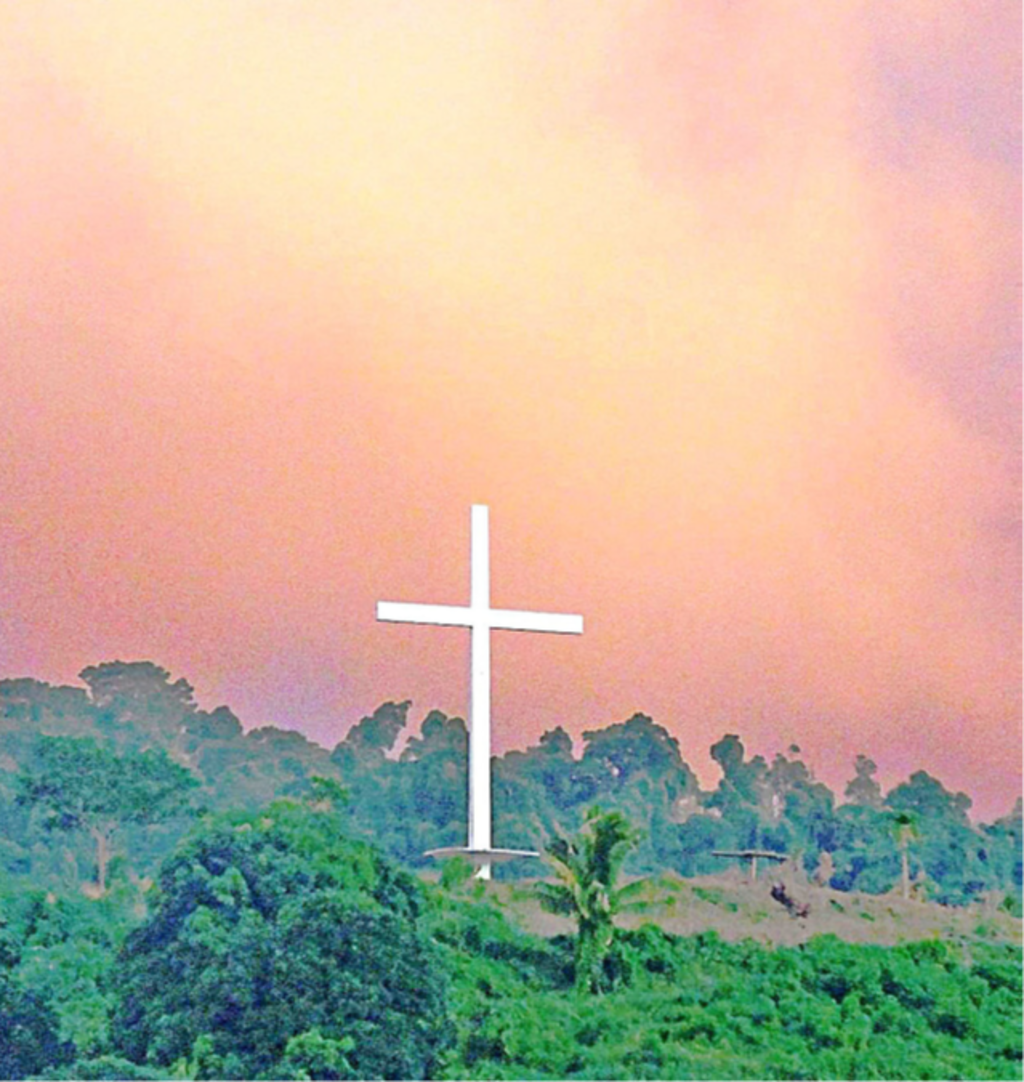
A larger-than-life replica of the cross that was given to
Ratu Golea by Father Favre. Picture: CHAMPAK LAL.
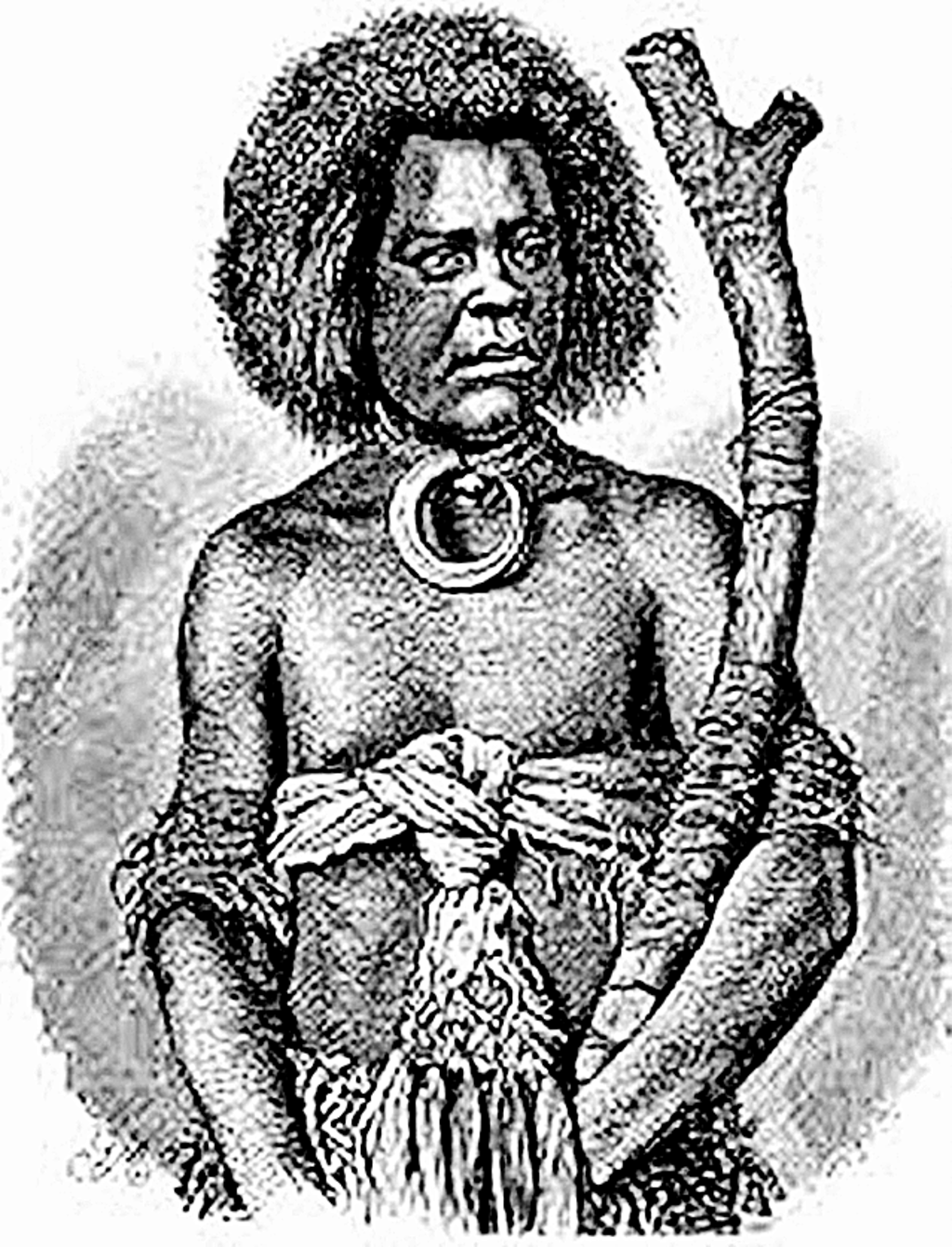
A drawing of a Fijian warrior. Ratu Daunivavana failed to recognise his own warriors in the heat of war.
Picture: SUPPLIED
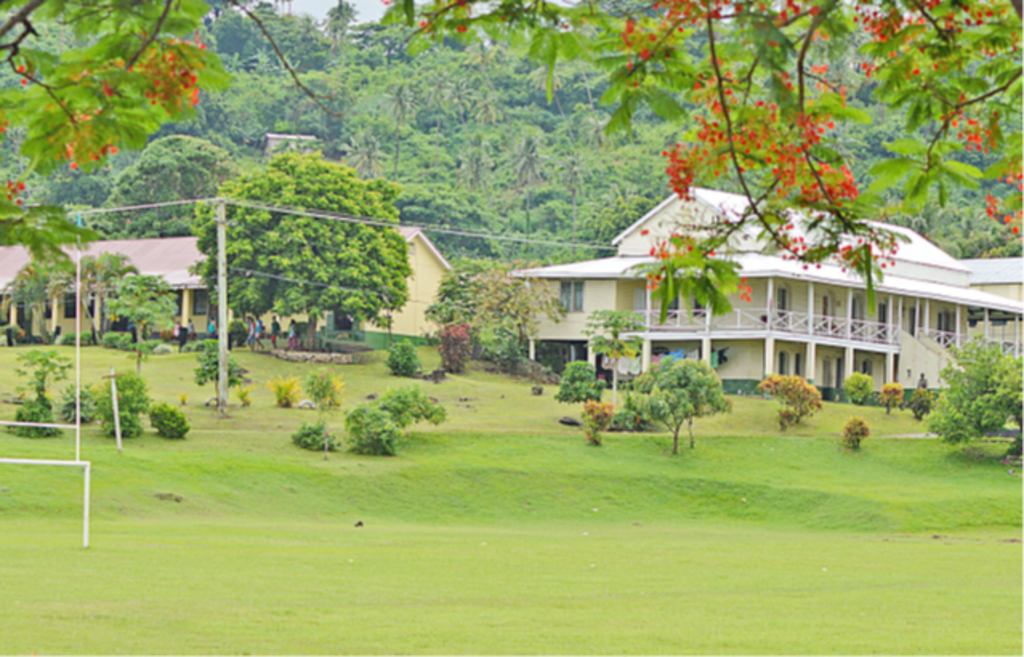
The priests’ quarters, presbytery, at the Wairiki Catholic Church compound. Picture: LUKE RAWALAI

